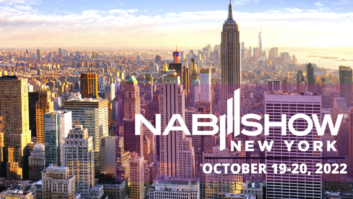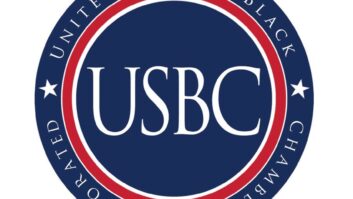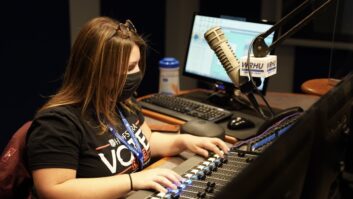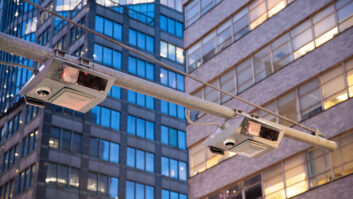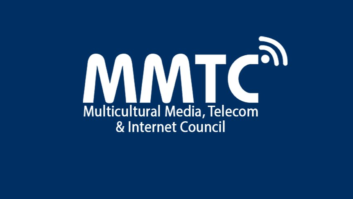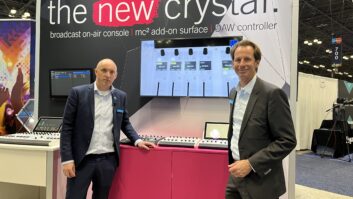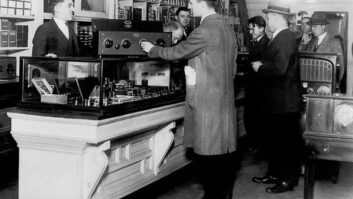GUEST COMMENTARY
The author is president of the International DMB Advancement Group (IDAG) and an advisor to NRK.

Gunnar Garfors is president of the International DMB Advancement Group (IDAG) and an advisor to NRK.
OLSO — Groundbreaking technological developments are far apart in the world of radio, especially in conjunction with the mobile industry.
History shows us that cooperation is undervalued, and the broadcasting industry has now joined forces to help mold the future of radio and to conquer the final frontier — the ubiquitous and omnipresent mobile phone.
COMBINATION IS KING
Your phone and what you use it for largely defines you. Whatever your problem, need or desire is — there is an app for it. Mobile phone app developers can control your phone camera or check the GPS chip for details of your location. That enables, for instance, Google Maps to tell you where you are, and allows news apps or shopping apps to give you relevant and local information.
“There are temperature sensors, altimeters and all kinds of things inside your mobile phone. Your app knows whether you’re walking, cycling or in a car and in your app you can play music, make the phone vibrate and lots of other interesting things,” said “radio futurologist” James Cridland in a podcast.
The smartphone is now camera, calendar, compass, map and music box, plus wallet to some. And who will ever forget Nokia’s “connecting people” catchphrase, which social media has made as valid as ever? But the smartphone has been lacking in terms of radio.
There are of course many streaming apps available, but an hour’s worth of radio streaming sets the user back 70 MB of data and increases phone bills, while congesting telecom networks. I am instead talking about broadcast radio, or “real” radio, as some people call it.
App developers have not had access to FM or DAB+ chips inside phones. This means that apps can’t control those chips and makes it impossible to create excellent radio apps that don’t require much bandwidth or battery, will work independently of how many people listen simultaneously at any given time (including in emergencies), or combine the best of two worlds: The world of broadcasting for all, and the world of the internet for individuality. Combination is king, but making worlds unite has been a long-lasting headache for radio stations globally.

The LG Stylus 2 DAB+-Enabled Smartphone.
SOLUTION
We decided to try cure the pandemic pain. The fix is named OMRI and is perhaps a fitting name for a painkiller. In this case it is the acronym for Open Mobile Radio Interface. It is essentially an API or a technical interface that standardizes the communication between a phone chipset and apps. It is an interface that supports a range of functionalities and ensures that any compatible DAB+ app will work on any capable smartphone. It allows broadcasters to easily make use of a DAB+ tuner in the smartphone and customize their apps. This lowers the barrier for more phone manufacturers to introduce DAB+ in their handsets.
The initiative has generated interest from the broadcasting industry and beyond. Car, phone and chipset makers, as well as mobile network operators, see benefits and have established dialogues with the consortium, which comprises the EBU, WorldDAB, IDAG, the BBC, Radioplayer, All In Media, IRT, Konsole Labs, Fraunhofer IIS, MTVNL, Commercial Radio Australia and two chipset manufacturers. The first OMRI-compliant DAB+ chipset is due for release in early 2017. Several apps based on OMRI, using middleware to communicate with chipsets, are already commercially available.
“OMRI is an open, universal and freely available Java interface that makes it easier, faster and more efficient to embed DAB+ functionality for both smartphone manufacturers and app developers,” explained Alexander Erk, head of the Media Services and Applications department at IRT, a German company that has been instrumental in the technical development. Commercial Radio Australia and the BBC have also made great technical contributions.
THE DETAILS
It all sounds good. But what does it really mean? OMRI gives us the ability to conceptualize and develop groundbreaking apps that take advantage of the possibilities of broadcasting and the internet. It enables innovative functionality that will make radio move forward in a time of noise. Fast moving noise. The internet has helped our media habits change so rapidly that it is difficult to remain “rad” and relevant for those of us working with “old-fashioned” linear and often live radio.
I am not talking about changing that aspect of radio, the most loved and used media in the world with 93 percent of the world’s population listening to radio on a regular basis. I am talking about letting us experiment with new concepts and to update older ones, with elements of individuality thrown in. Most radio programs will still live a perfectly sustainable life on their own, but some listeners — usually younger ones — may expect more than just familiar and much loved voices.
The minds of those voices, and their producers, can often get valuable feedback from the many ears out there, perhaps something even more exciting than the odd text message from John, a postcard from Jamaica or the cheerful Julia who always knows the correct answer to your geography quiz.
For a timeline analogy, let’s say that the world’s first DAB+-enabled phone is the first electrical typewriter. That means MSDOS is just around the corner. And then the possibilities are unlimited, we just need to start inventing them.
Broadcasting may be old, but it is not outdated. It still works exactly the way it was designed. That is also the case with the wheel. We may still appreciate alloy rims to those made by stone, steel or wood.
Radio World welcomes other points of view. Please send comments to [email protected].





